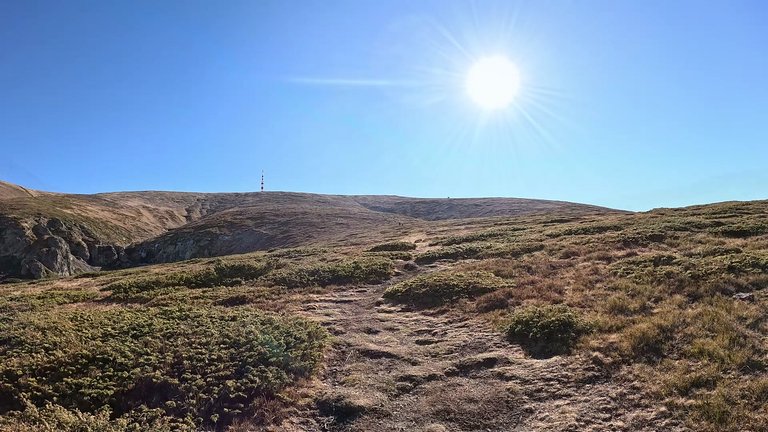
Hello friends. The hiking season in Bulgaria is almost over. At the end of the season, we decided to climb Botev Peak with a one-day hike. This peak is the highest point of the Stara Planina mountain range, an impressive and beautiful mountain range stretching across Bulgaria. That's why we knew this hike would be quite interesting.
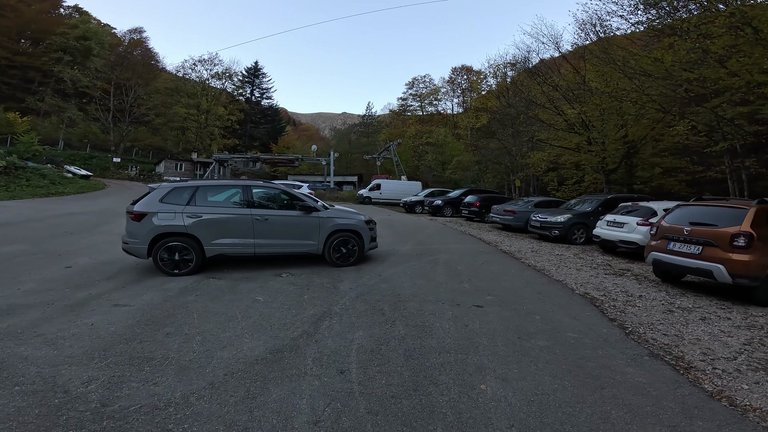
We set off early in the morning, as the weather looked promising. We needed to drive about 15 km to reach the parking area near Pleven Mountain Hut. After 15 minutes we arrived at the parking lot. This is the parking lot for the Pleven Mountain Hut, which is said to be paid, though not always. There is also a cable car here. Historically, this cable car was used only for transporting goods and for tourists' backpacks to be carried up the mountain. However, over time, it was used only for goods and was eventually dismantled.
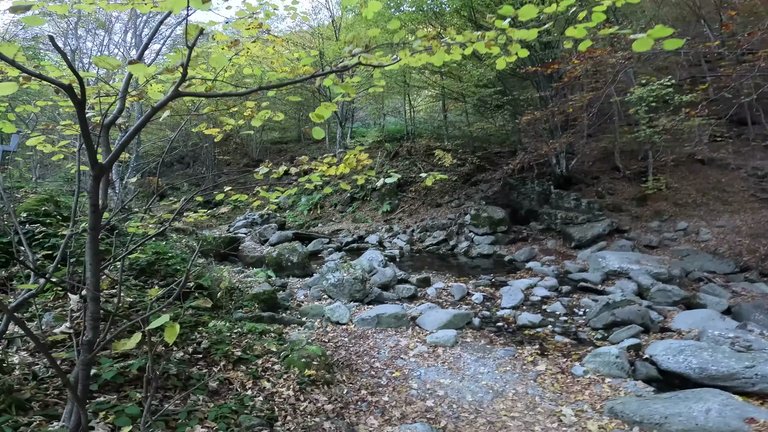
Our journey began from here. Theoretically the route would take 5-6 hours, but we had to see how it would go. It was quite cold, so we had dressed warmly. The temperature was around 1 degree Celsius. It would take us about 4 hours and 30 minutes to reach Botev Peak and 1 hour and 10 minutes to reach Pleven Mountain Hut. We set our time and began the hike.
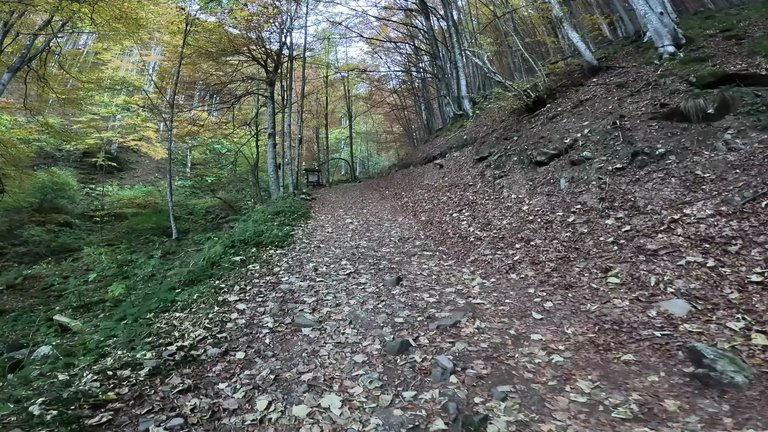
The trail passes through a beautiful beech forest and autumn is truly the best time to visit here. We reached the first junction. the road to the right was a steep route to Pleven Mountain Hut and the straight path was longer but easier. Since we thought there was no need to start with a steep incline, we chose the longer route.
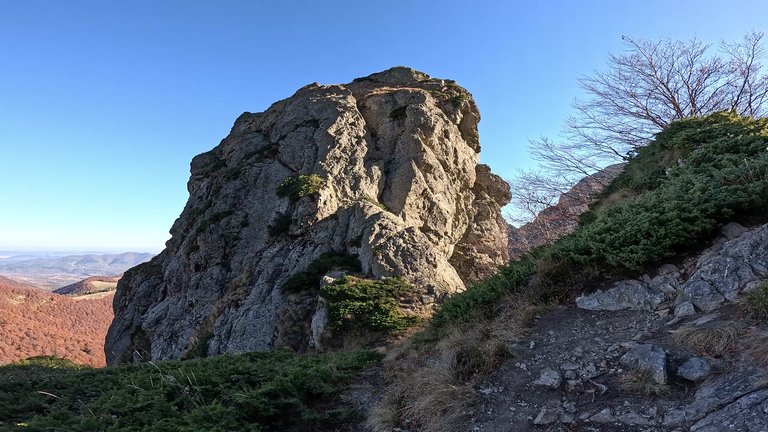
Last year, we had hiked to Botev Peak from the south and stayed overnight. The southern route is considered easier, but this time we were going from the north, which is theoretically harder. The views were really impressive. At a junction near a bridge, we discussed with friends and decided to take the Vodni Dubki route instead of the Pleven Mountain Hut route. This route is one kilometer shorter but steeper.
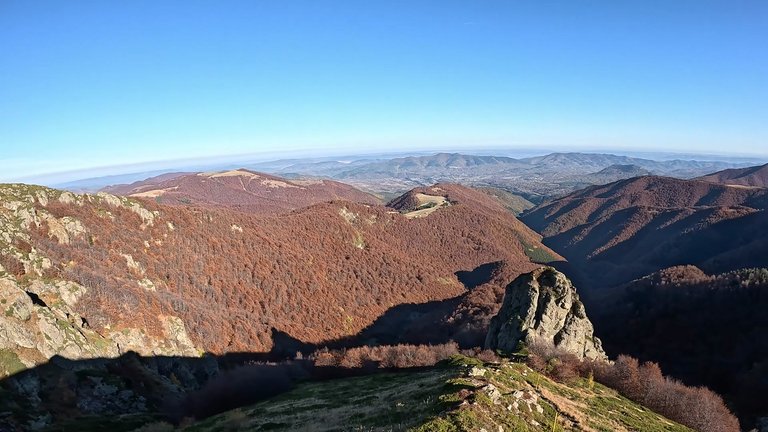
After 50 minutes, we reached another junction. Here, you could turn left to visit the Vodni Dubki Cave. The cave is quite impressive and if you have time, definitely visit it. But since our goal was Botev Peak, we continued straight. The Pleven Mountain Hut route veers to the right, while we took the marked yellow pipe trail, which is the winter route and began climbing steeply up the mountain.
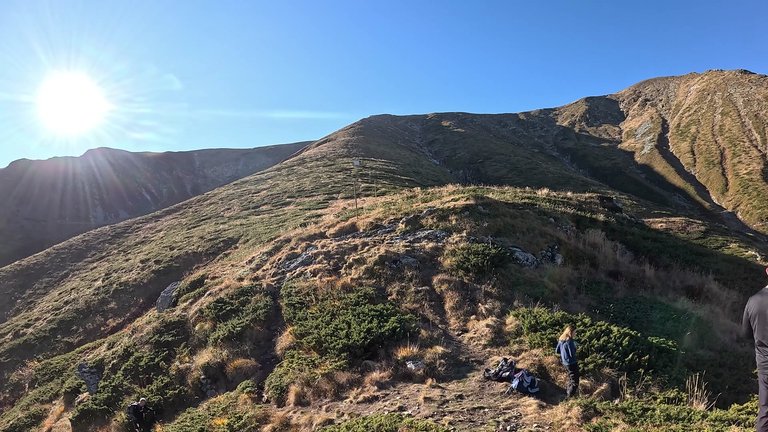
The climb became increasingly difficult as we were climbing over rocks, occasionally encountering steep cliffs on the right. We continued holding onto a tree. It was a tough climb, but nothing dangerous yet. However, the incline was quite steep and we had only gone 400 meters. Another kilometer of such steep climbs awaited us. Of course, starting from Pleven Mountain Hut would be easier, but we planned to descend there.
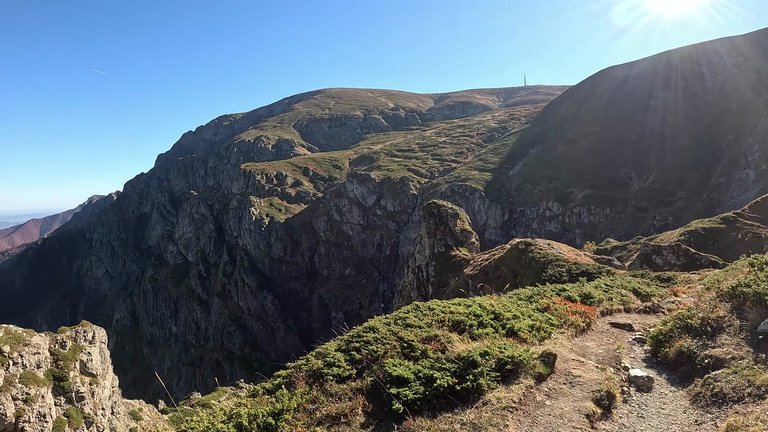
As we progressed upwards, we encountered tourists descending from the summit. The trail was very nice, rocky and the views were stunning. We approached the forest’s edge, where there was a rocky outcrop and the path was entirely rocky. This outcrop leads to Kupata Peak. Some ropes were set up there and I think this is the route that passes through that spot. We were nearly out of the forest and could see Pleven Mountain Hut in the distance. In fact, we passed near there on our return, but since it was a steeper route, we took an easier descent.
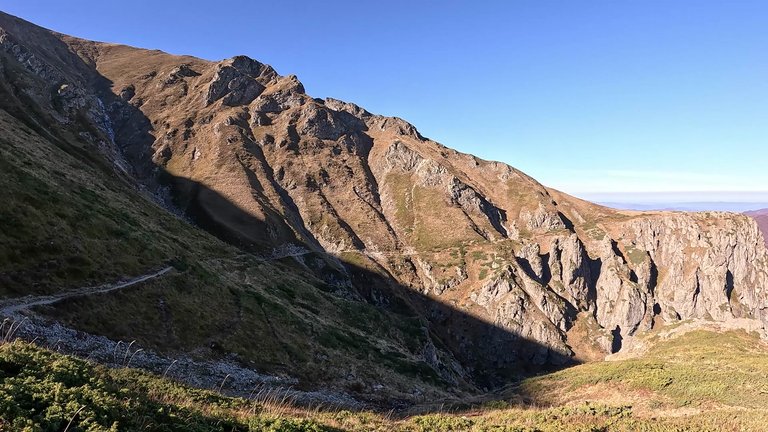
When we completely exited the forest, there was still a tough climb, but we had to continue and there were beautiful sights to see. From the opposite side, the radar tower at the summit began to appear against the sun, indicating we were getting close to the peak. We crossed several rock formations, took a short break and decided to enjoy the view. The scenery here was truly magnificent, with the Stara Planina mountains, rocky formations and deep valleys around us. We were really lucky to have chosen this route because it was incredibly beautiful.
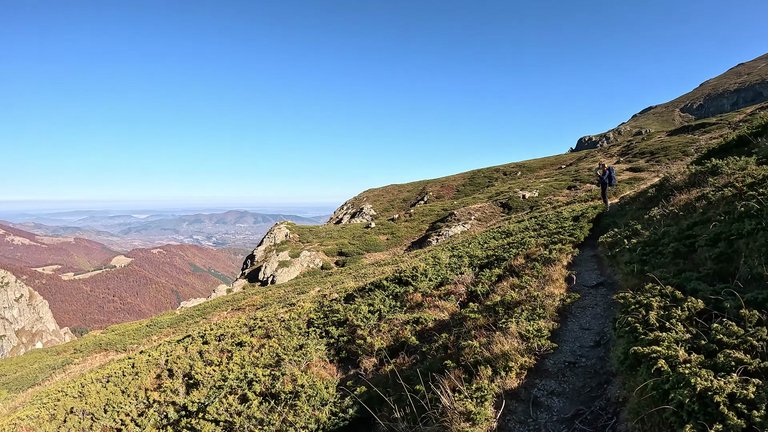
Ahead, there was another steep climb, but it wasn’t going to be hard to tackle. It seemed like a wide clearing, yet the incline was still quite steep. We continued for about 15 minutes across the rocky valley. A lot of time had passed since we started, but we had spent most of it taking photos, so we could rest comfortably.
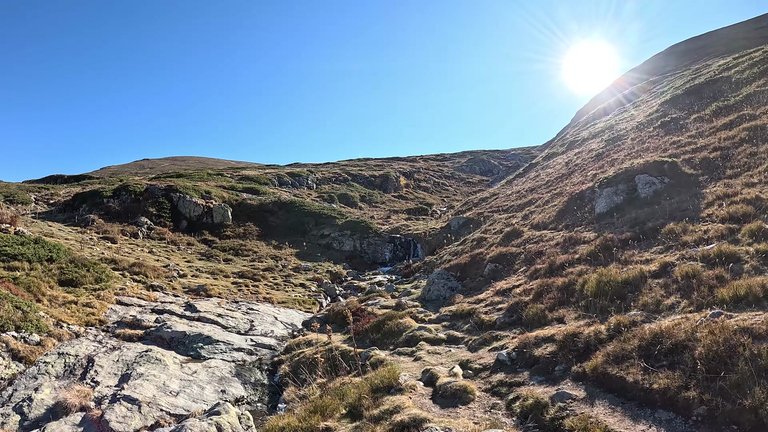
There was also a river here, in the area where the Devil’s Waterfall is located. There wasn’t much water when we went, but in spring, it has a very strong current. When we were there, it just looked like a small stream. The incline of the path was about 20 degrees, but the view made it worth it. Despite the tough climbs, the waterfalls and rocks around us made us forget all the difficulties.
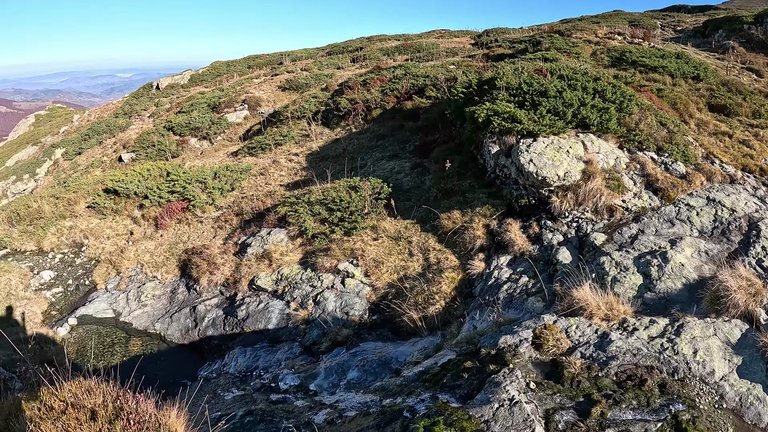
The return route would be different and we were happy because it allowed us to make a circular route. As we approached the engineering station, we realized that, having reached this height, we still had about 50 meters to go. We lost a bit of time, as we had planned to reach the peak in 4 hours and 30 minutes, but we were at 4 hours and 27 minutes. However, we were still progressing with a beautiful view. Below, there were huge valleys, but on our return, we passed through this peak. This would be another climb, as we planned to descend to Pleven Mountain Hut from the second route. There were only a few more meters left and we saw the radar tower. We reached here in 4 hours, 39 minutes and 17 seconds. We went a bit off plan, but everything was fantastic. The advantage of autumn climbs is the incredible visibility they offer.
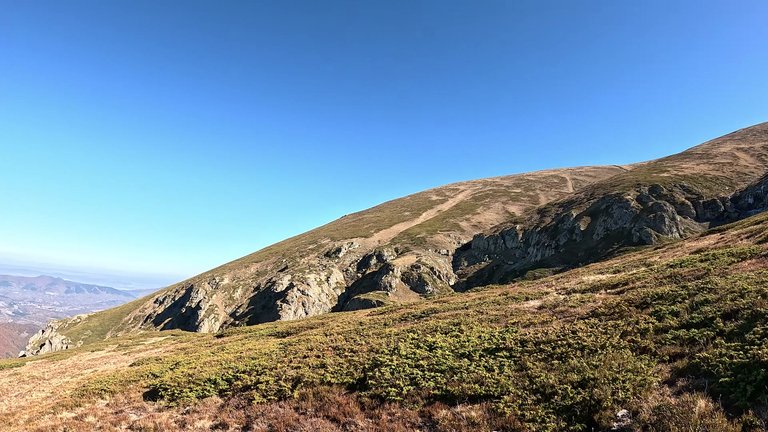
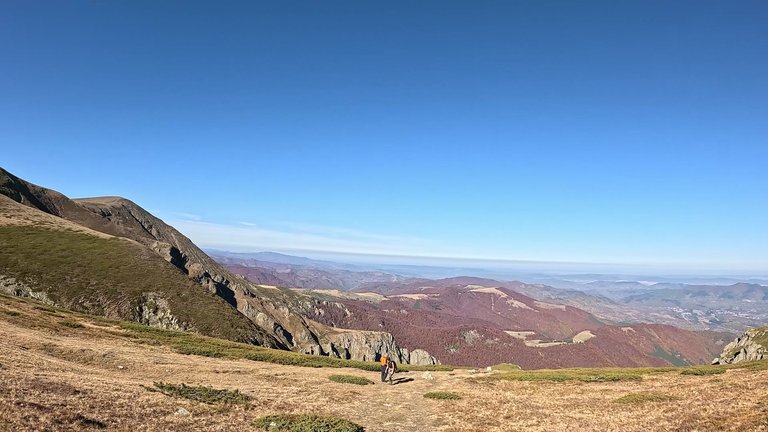
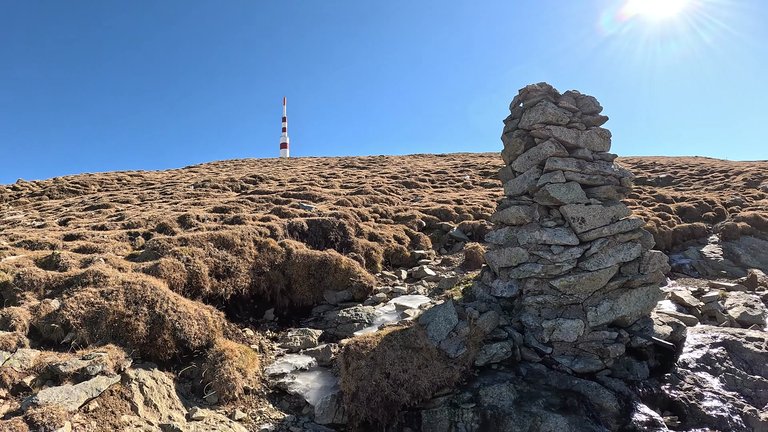
Yes, friends, we had reached the Botev Peak! This is the highest peak of the Stara Planina mountain range. Stara Planina is the longest mountain range in the Balkans, stretching from the Black Sea through Bulgaria all the way to Serbia. The mountains are beautiful, though not very high. The highest point is 2376 meters. On this peak, there is an observatory and various scientific institutions. There is also a television tower or radio tower and possibly even a telescope. However, for confirmation, you can check online. There is also a tourist shelter here and it is actually possible to hike up and spend the night. Those who stay here can enjoy the starry sky. In the morning, they can return and descend. The shelter costs about 20 leva, which is the standard price across Bulgarian mountains. The beds are usually in shared rooms with bunk beds.

The peak is dedicated to the memory of Bulgarian revolutionary Hristo Botev, a hero who fought during the Ottoman Empire period. There is a large monument and museum dedicated to him in the town of Kalofer in the south. If you decide to climb from Kalofer, you can visit these places. However, it’s hard to reach the summit from Kalofer in one day. It’s nearly impossible to complete this route without staying overnight. You either have to stay at the Rai shelter or camp. Last year, we stayed in a tent, which was very cheap, costing only 5 leva.
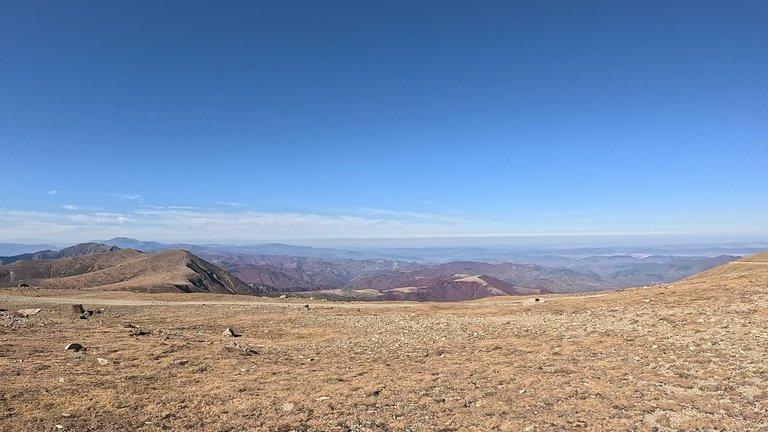
We were on our way back but decided to try a different route. Last time, our descent from Vihren Peak had been a bit dangerous, but in any case, our journey continued. Just below the engineering station, there’s a café serving hot meals and snacks. The prices are quite reasonable, so we thought we could rest for a bit and enjoy a nice meal.

The descent looked like it was going to be tough, but we were determined to reach the end. By the end of the day, we hoped to reach the Pleven Mountain Hut before sunset. We set off, but I was a bit anxious because we had to find the right path to avoid spending the night there.
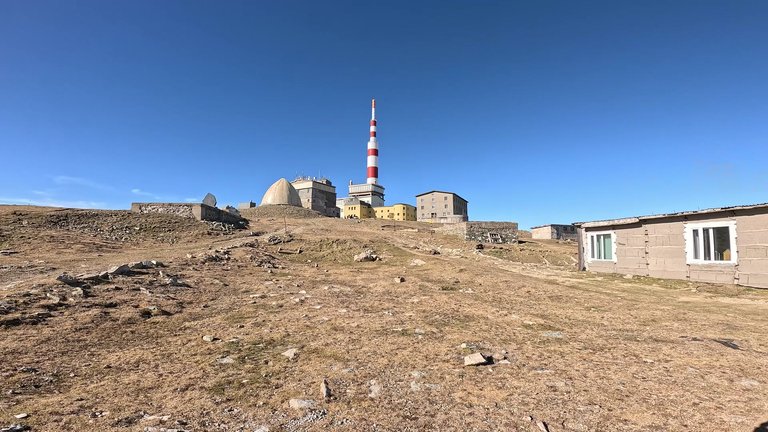
The descent was indeed challenging and time was limited. Our goal was to first reach the mountain hut, then head to the parking area. The light was quickly fading and we only had 2 hours left. If we didn’t make it in time, the only option would be to spend the night in the forest, which wasn’t an appealing thought. But at least we could enjoy the stunning views of the rocks and Botev Peak.
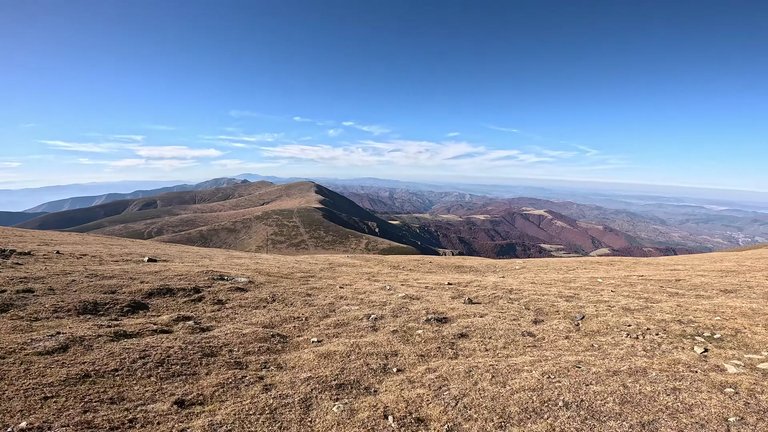
The descent became a bit more complicated, especially in rocky areas. We encountered a few difficult sections, but there was no turning back now. Last time, we turned back at Vihren, but this time, we had to go down. We also saw snow in the valley and the sun was setting. The weather was cooling rapidly, so I put on a thick jacket and thankfully, I had a spare one. It was really cold and we had to be extra careful.
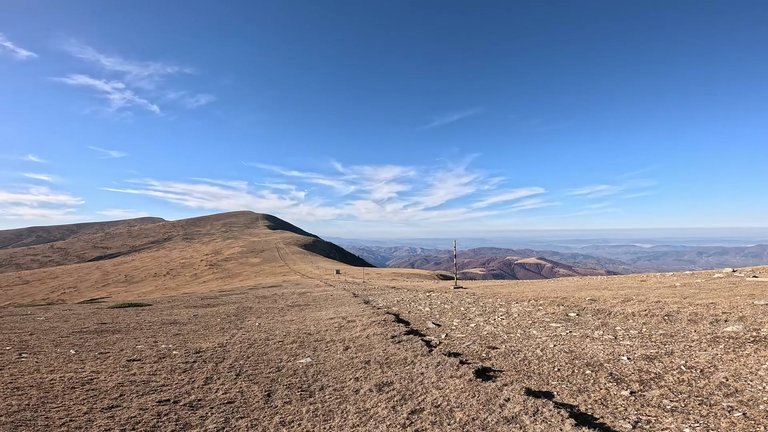
The descent took 50 minutes and was quite exhausting. The route was much steeper than I had expected. We moved slowly because it was difficult. If you have a fear of heights, I wouldn’t recommend this path. Without good hiking shoes and trekking poles, it’s impossible to make it through. In some places, there were safety ropes, but not everywhere. We preferred to use the ropes for descent, as it was a safe and practical solution.
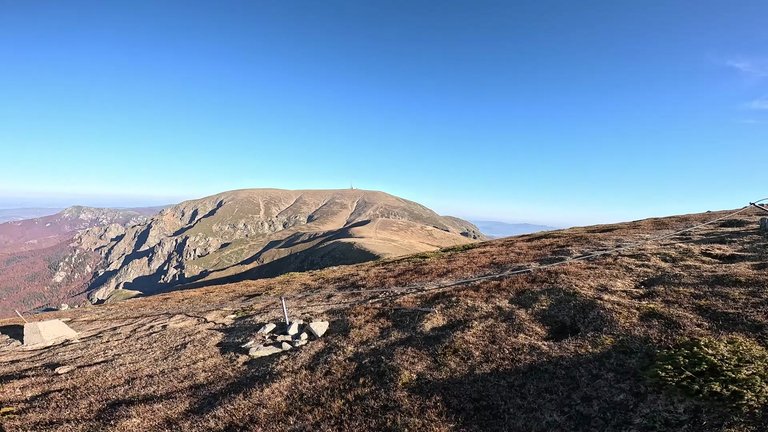
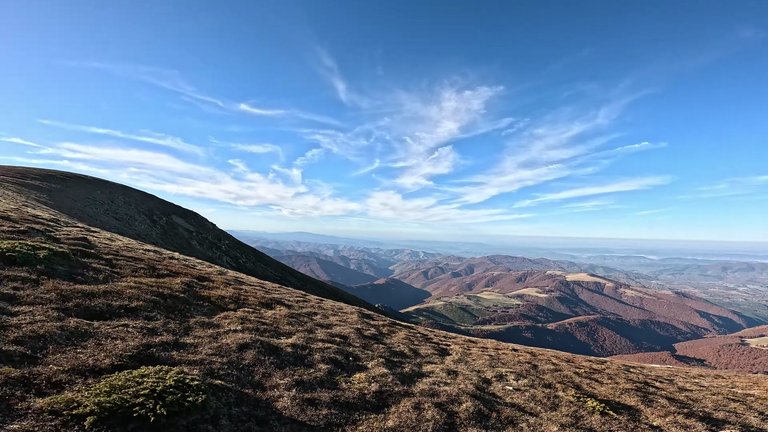
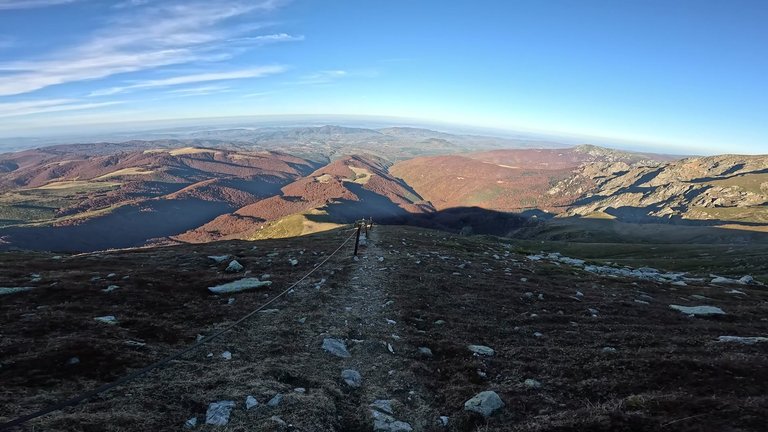
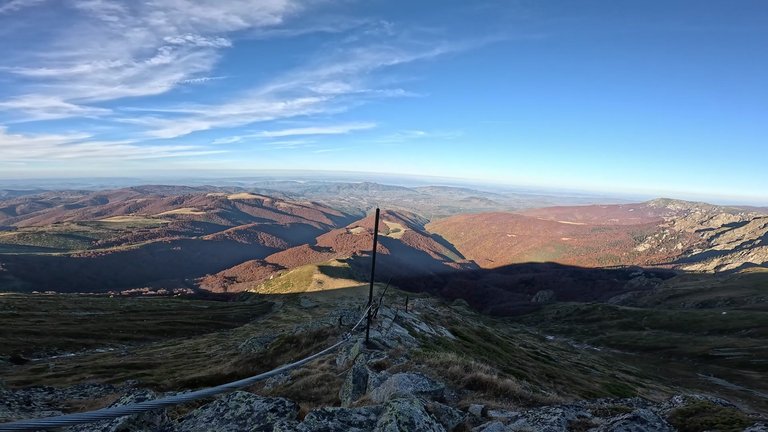
Finally, we managed to descend from Botev Peak. As we approached the mountain hut, the sky was starting to get dark. We still had a bit more descent to do. However, the breathtaking scenery that awaited us rewarded us. We walked slowly, enjoying the beautiful autumn colors.
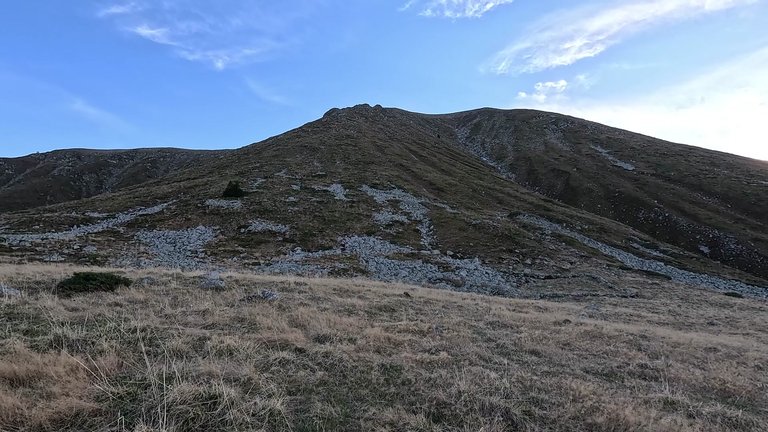
Eventually, we reached the Pleven Mountain Hut, where we found an old ski lift system. This was used by skiers on the mountain. Unfortunately, there is no ski resort here, but it’s a great place for mountaineering. We arrived at the parking area late in the evening.

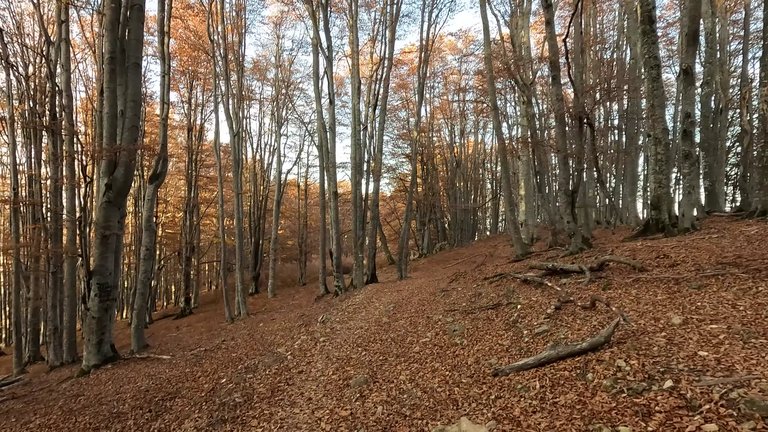
At the end of this route, our 10-hour and 10-minute journey was over. We arrived at the parking area at 17:45. Time was tight, but we knew nothing could stop us from setting out.
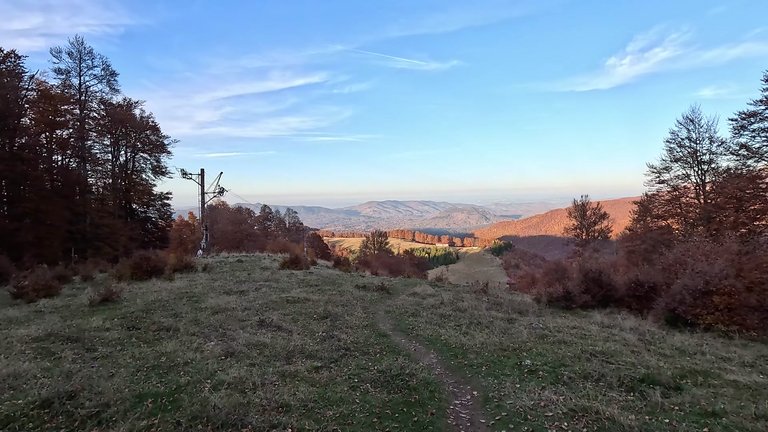
We spent the night at a hotel. The hotel provided a warm and comfortable environment with a bed, bathroom, air conditioning and a bit of living space. There is also an indoor swimming pool and a barbecue area around the hotel. Yes, the price is a bit high, 100 leva (about 50 USD), but it was still a very enjoyable experience. After such a challenging climb, a good rest was well worth it to prepare for the next adventure!
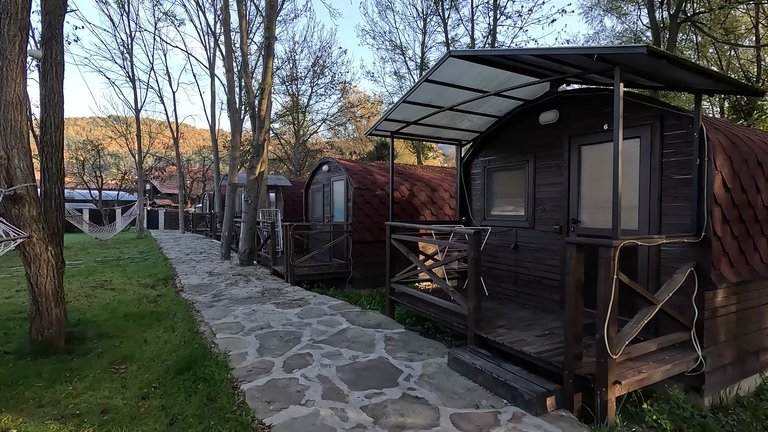
Adventure requires preparation and knowledge and of course, mountaineering equipment. Winter routes are available, but to pass them in winter, it’s essential to have spiked boots and safety precautions. The winter route follows the same path as our descent and is quite a tough course. It’s very important to think ten times and make proper preparations for such routes in winter.
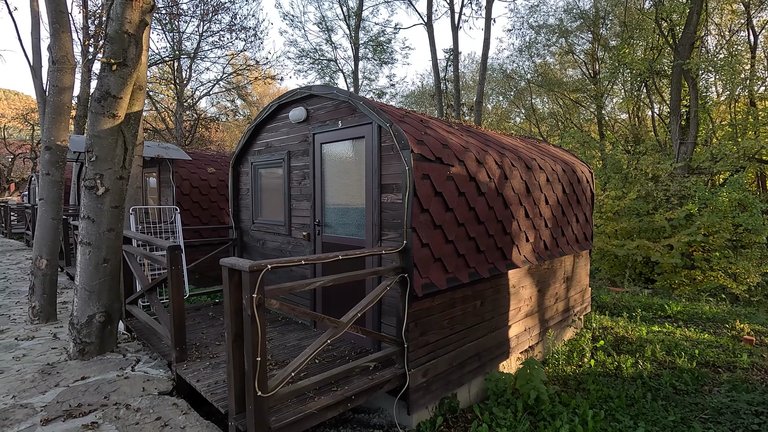
Tourism season in Bulgaria starts in the second half of May and continues until the end of September. Tourist routes are arranged so that you can always stop by a mountain hut or shelter while on the trail, meaning there’s no need to carry cooking supplies, tents or sleeping bags. Accommodation and meals are waiting for you in the mountain huts. The prices are quite reasonable. For example, a night’s stay at Botev Peak costs about 20 leva per person and lunch (excluding alcohol) is about 10-12 leva.
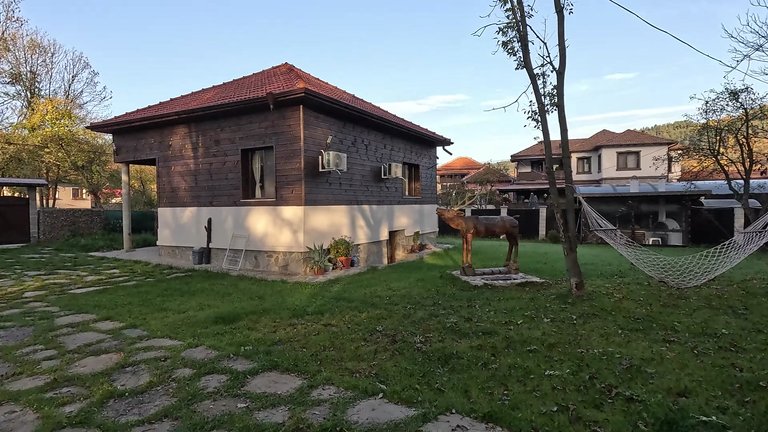
Tourist infrastructure in Bulgaria is quite developed with these mountain huts. Therefore, both one-day hikes (for those of us with pets) and multi-day routes are possible. In summer, doing a one-day hike to Botev Peak is completely safe, meaning you can do a day hike without carrying any equipment. The route we climbed could be easily done with regular sports shoes and shorts.
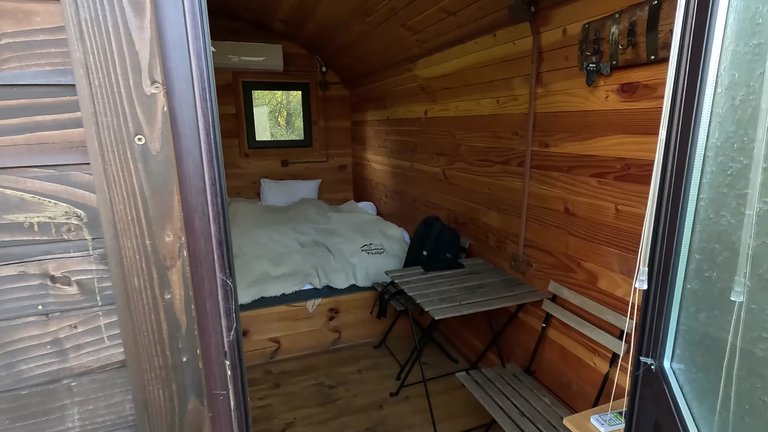
However, if you want to take a circular route and hike in spring or autumn, you must have good shoes, warm clothes, a hat, sunglasses and gloves. I used all of these because when we entered the shade of the mountains, the temperature in the mornings dropped to -1°C and in the evenings, it was around 5-6°C. You can’t manage without a hat and jacket. A good pair of shoes is essential for the descent. It’s impossible to go through with sports shoes or sandals. Trekking poles were also indispensable for us. we use them for any simple walk because they support the back and reduce the load on the feet. They are really a great invention and I can’t understand why people overlook them.
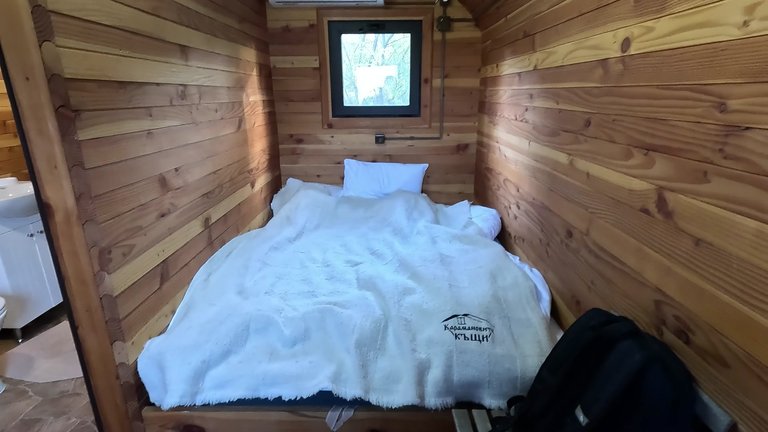
For tourists like us, one-day hikes are like a fresh breath, a minimal solution to escape the toxic environment of the city. We’d love to camp, hike with tents or spend the night alone in nature, but at least this way, we don’t feel distant from the mountains.

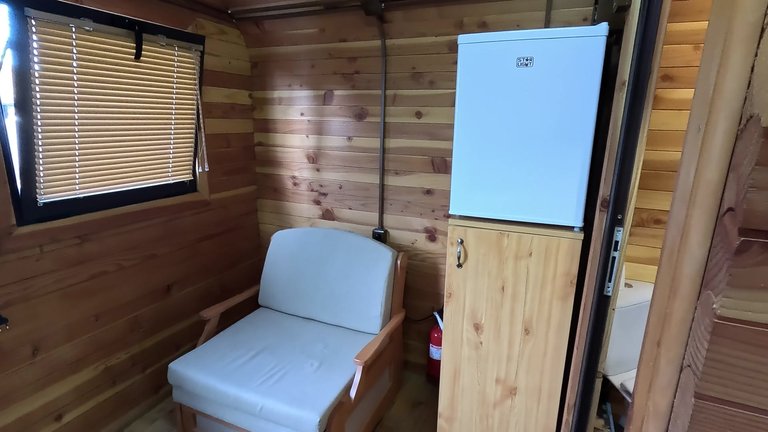
I researched this route on websites and forums. However, the situation is quite sad because the route we climbed is promoted as the hardest route, while the route we descended is listed as moderately difficult. It’s hard to understand. With new posts and discoveries, we’ll meet again soon, as we plan to visit many more interesting locations.


